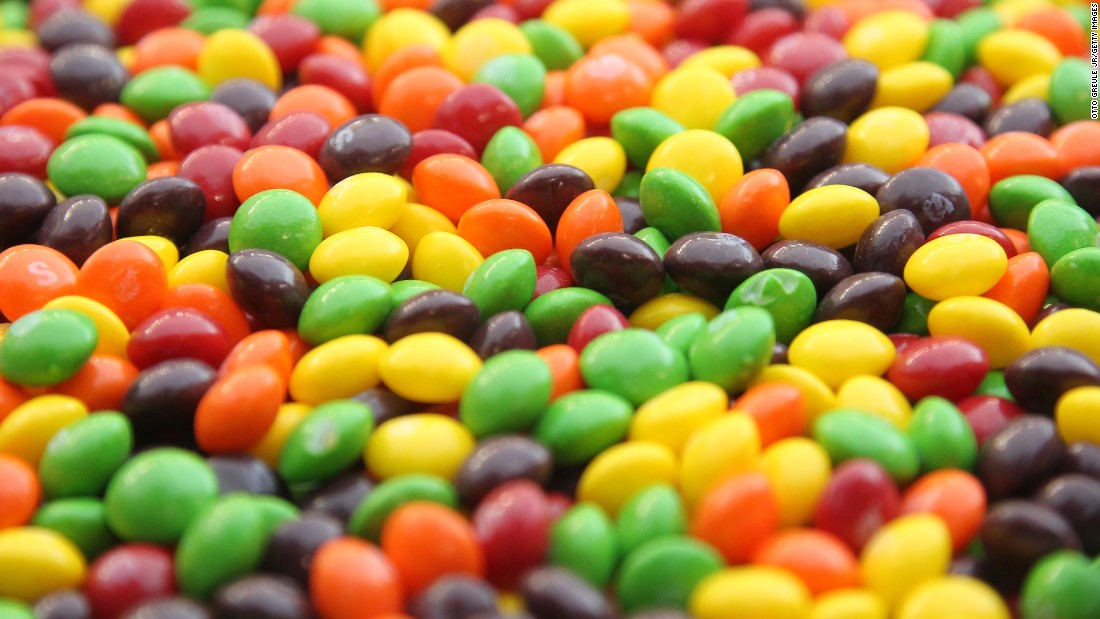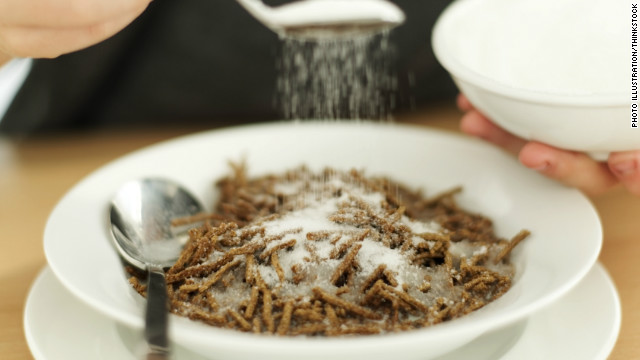
(CNN)A lollipop after a morning doctor visit. A cupcake for a classmate’s birthday with lunch. A bag of cookies, gummies or a few little doughuts before after-school activities begin.
And dessert is still a few hours away.
Even the word “snack” — once thought of as a healthy, energizing source of calories for children — can seem like a euphemism for a sugar solution IV these days.
“Sugar (specifically fructose) is metabolized in the liver just like alcohol,” said Dr. Robert Lustig, a professor of pediatrics at the University of California, San Francisco. “This is why children are getting the diseases of alcohol, like type 2 diabetes and fatty liver disease, without the alcohol. These are diseases that were unheard-of in children prior to 1980.”
According to the CDC’s 2014 diabetes report card (PDF), more than 5,000 new cases of type 2 diabetes are estimated to be diagnosed among Americans younger than age 20 each year.
There’s also been an increased prevalence of metabolic syndrome in adolescents; that’s a cluster of conditions, including increased blood pressure and excess fat around the waist, that can increase diabetes and heart disease risk. Lustig’s recent research, published in the Public Health Nutrition journal, found that it wasn’t the fault of the pounds that sugar packs on to young people; it was another result of excess sugar.
“Sugar doesn’t cause disease just because of its calories. Sugar causes disease because it’s sugar,” Lustig said. “Thin people get metabolic diseases like type 2 diabetes, too. Obesity increases the risk, but sugar is an independent risk factor apart from calories or obesity.”
Sweet suggestions
So what can parents do to keep sugar from overtaking their kids’ diets? Here are a few suggestions from experts.
Don’t deprive your kids of sweets.
Despite the consequences, health professionals agree that parents shouldn’t deprive their child of sweets.
“Sugar is not a ‘toxin’ that must be excluded from a child’s diet,” Isoldi said. “Often, children who have sweets restricted and feel deprived will not learn how to regulate sweets. Instead, they often overindulge whenever the possibility is presented.
“The key is to help children find a balance with food, helping them learn how to enjoy healthy foods and enjoy (and self-regulate) treats.”
Even Lustig agrees. “I’m for dessert — for dessert. I’m not for dessert for breakfast, lunch, dinner and snacks,” he said.
Allow children one sweet treat or dessert per day.
Good choices include animal crackers, vanilla ice cream or frozen yogurt. However, if kids are set on having chocolate chip cookies, this should not create a “food fight,” Isoldi said. And — deep breath — don’t restrict portions, even if it makes you anxious to watch.
“Parents should let their little one decide on the amount to eat, because only allowing one or two cookies will create a restrictive environment that is counterproductive.” That doesn’t mean that you have to offer the whole box, however. You can start by giving your child two cookies, but instead of saying, “You may have ONLY two cookies, do you hear me?” you can instead say, “Here are two cookies. Oh, you want three? Sure.” The idea is that your child should be able to learn his or her own internal satiety cues, which can ultimately help prevent eating issues later in life.
Keep fruit drinks, soda and sugary beverages out of the house.
“There’s no nutritional benefit to drinking sugar-sweetened beverages,” Isoldi said. AND although liquid calories can still add up, you don’t feel as full as you would from solid foods. The result? People who drink sugary beverages don’t necessarily cut back on their calorie intake to compensate.
For an alternative to soda, dilute 4 ounces unsweetened juice with 4 ounces seltzer water and flavor with lemon, lime or other fresh fruit.
Watch out for sugars in foods that you don’t think of as sweet.
Keep an eye on breads, sauces and condiments by searching ingredient lists for names such as high fructose corn syrup, dextrose, glucose, sucrose or other words ending in “ose,” evaporated cane juice, brown rice syrup, malt syrup and molasses. Food packages will soon list “added sugars” as a separate line on nutrition labels, so the amount of these sugars will no longer be “hidden.”
Remember, even natural sugar is sugar.
Many people think that “natural” sugars like honey and agave are healthier than ones that are more highly processed, like sucrose or table sugar. But when you look closely, you see that all of these sugars contain fructose and glucose. And while honey may offer some antioxidants, you would probably have to consume a lot of honey calories in order to experience any health benefits. Honey and agave are actually sweeter than table sugar and contain more calories: One teaspoon of sucrose has 16 calories, while 1 teaspoon of agave or honey has 21 calories.
This doesn’t mean foods containing natural sugars aren’t healthy. But how these natural sugars are packaged matters.
A piece of whole fruit like an apple contains naturally occurring fructose, but it also delivers 4.4 grams of fiber, thanks to the peel and pulp. Apple juice, on the other hand, lacks fiber and is a more concentrated source of sugar and calories. This translates to a more rapid rise in blood sugar when you drink juice — and may even help explain why eating whole fruit, including apples, has been associated with decreased risk for type 2 diabetes, while greater consumption of fruit juices has been associated with a higher risk, according to a Harvard study published in 2013.
Read more: http://edition.cnn.com/
source http://www.gp724.com/how-to-stop-sugar-sneaking-into-your-childs-diet/




No comments:
Post a Comment